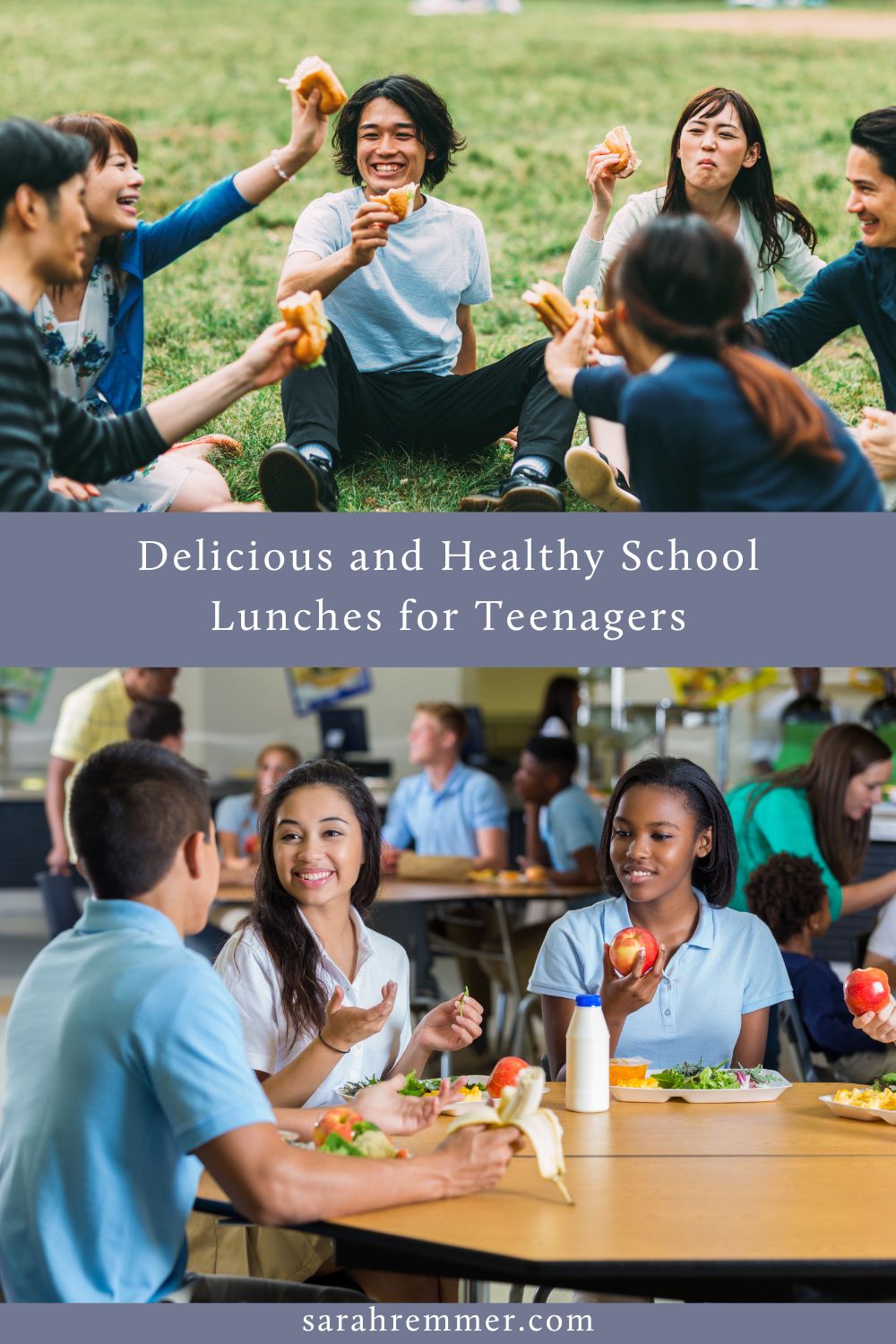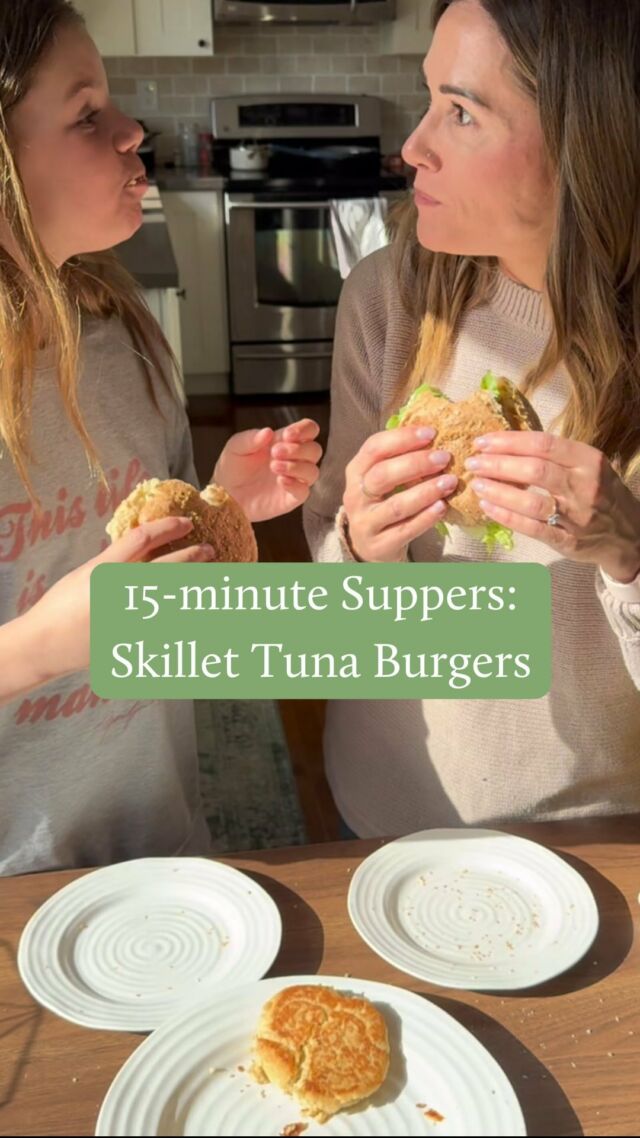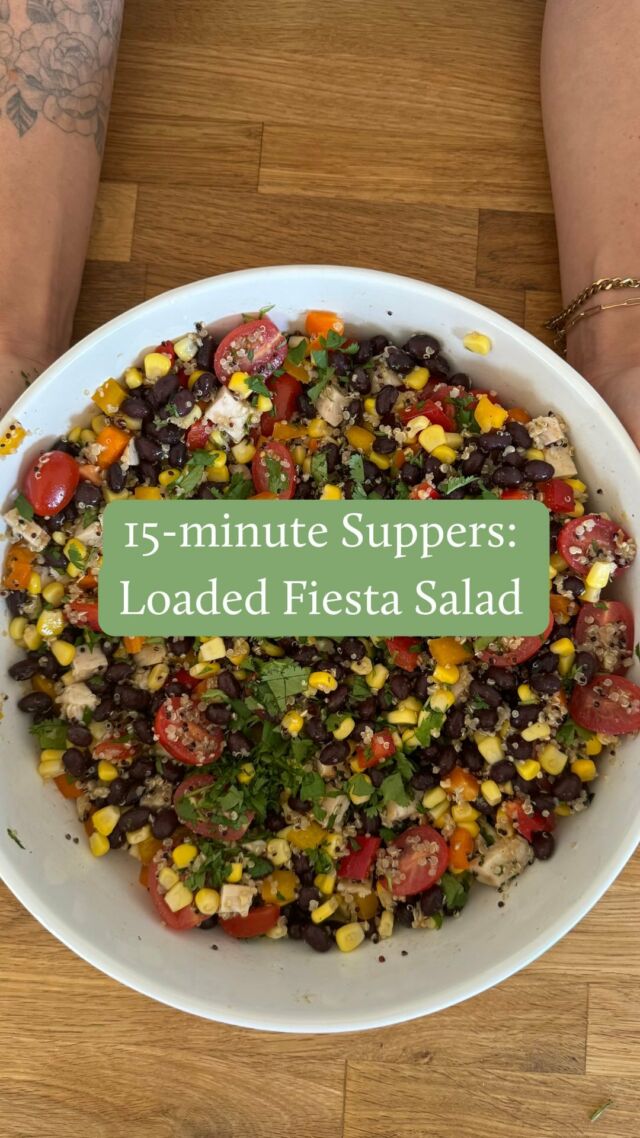Packing school lunches for teenagers can feel overwhelming! As a dietitian mom, I share lots of nourishing and tasty school lunch ideas, perfect for tweens and teens!

This post is written in paid partnership with my friends at What About Wheat?. All opinions are my own.
If you’re a parent of a tween or teen, you might be experiencing some overwhelm trying to figure out what to pack in their school lunches (or should they be packing it?!), which foods to include (or not include?), and just how much control you should relinquish. You might also notice that their eating habits and preferences have shifted from when they were younger, and that this is highly influenced by their peers and social media.
Gone are the days when we could simply pack a lunch with a variety of nourishing foods, in their cute little bento box, and they’d happily accept it. Now, it might look more like throwing some random packaged snacks in a plastic bag and calling it a day (or at least this would be ideal for my son). This is all normal and not something to stress about, and there’s only so much control we can hold onto. Sometimes the natural consequence of having no energy, feeling hungry at school, or not being able to focus does the trick. And it might just be that you need some fresh ideas that might suit teens more than little ones. Don’t worry, I’m going to share lots of ideas in this post!
But first, it’s important to reject diet culture and create a food-neutral home
As a parent of a young teenager, I’ve witnessed how social media, peer pressure, and diet culture influence their eating habits. Prime Hydration, anyone? Rejecting diet culture as parents and role-modelling body acceptance are crucial tools for guiding teens toward a healthy relationship with food.
Let me point out though, that this is not an easy task. Particularly if you grew up in the 80s and 90s like I did, where diet culture was everywhere, where thin bodies were celebrated and desired, and fatphobia ran rampant. So, this may first require you to reflect on your own relationship with food. Eek! I know… I told you it’s not easy! But the thing is, sometimes as parents, we unintentionally expose our kids to diet culture in the home with words and actions that reflect our own deep-seated beliefs, the trauma that we might have experienced around food, or perhaps even our own fears of fatness.

Yes, teens are exposed to A LOT on social media, and through their peers, but ultimately, what kids hear and see at home is what matters most. In order to create a food-neutral home (and by the way, this will benefit everyone, not just your teen), try to avoid using dichotomous terms like “good”, “bad”, ‘healthy”, “unhealthy”, “junk”, etc.) when referring to food. This is where food is either demonized or put on a pedestal. Instead, just call each food by its name. This way, all foods are considered morally equal. Categorizing food in a morally charged way ultimately triggers guilt and shame about food choices, disrupting your teen’s relationship with food and their body image. Food is nourishment, yes, but it’s also connection, joy, celebration and memories. All valuable!
Teach your teen how to spot (and be critical of) misinformation about food and nutrition
It can be tricky to spot misinformation about food and wellness but, let me tell you, it’s everywhere, Especially, these days, on social media. Some examples are food and diet trends with zero scientific evidence to support them, new products that promise “bigger muscles”, “an increased metabolism”, or “heightened performance”, or a big bold claim that a certain food or food group causes inflammation or leads to disease, with little to no evidence to support any of it.
We know that our teens are going to be exposed to this nonsense and there’s not much we can do about that. But what we can do is encourage them to have a critical eye, spot misinformation and get curious about it. Empower your teen to question new popular products or trends that make unrealistic promises. If it sounds too good to be true, or if there’s not a whole lot of scientific evidence to back it up, it’s likely…too good to be true.
Similarly, when a food or food group is villainized or labelled as “unhealthy” or “inflammatory”, encourage your teen to question this! Nine times out of 10, if a food or food group is called out for being “bad”, “unhealthy”, or “toxic”, it’s BS.

All food groups have fallen victim to misinformation, but a great example is wheat-based foods (think bread, pasta, crackers, etc.). “Cutting carbs”, and “going gluten-free” have both been long-standing trends with SO much misinformation woven into them. Yet the reality is, Canadian wheat is packed full of nutrition (dietary fibre, B vitamins, iron, etc.) and is very safe and nourishing for the majority of the population. Unless you’ve been diagnosed with Celiac Disease, or an actual gluten intolerance (in which case, gluten-containing foods like wheat are not healthy to consume), you and your teen can enjoy wheat-based foods guilt-free. And bonus: these foods make packing school lunches SO much easier (and more delicious).
Now, speaking of school lunches, let’s get to the “meat” of this post, which is to give you and your teen lots of support in choosing nutritious lunches that fuel their day.

School Lunch Ideas for Teenagers
Aim for creative, varied and delicious lunch options
When it comes to teen nutrition, it’s important to include a variety of foods that provide a combination of protein, dietary fat, carbohydrates and fibre to help them feel satisfied but also have energy throughout the day (I also dive into some key nutrients for teens below). But it’s not ALL about nutrition. Lunches need to be appealing and enjoyable too! This is where creativity comes in.

Here is a table of ideas to get you and your teen started:
| Meal idea | Protein + Fat | Fruit & Vegetables | Grain/ Starch |
| Avocado chicken wrap | Avocado mashed, mixed with rotisserie chicken, add salt and pepper to taste | Lettuce tomato in wrap Apple on the side | Tortilla wrap |
| Cold pasta salad | Chicken or other protein of choice | Chopped vegetables of choice | Cooked pasta |
| DIY “lunchable” | Cheese, assorted meats | Veggie sticks | Crackers |
| Mason Jar Salad Layer dressing first followed by protein, cooked grain then chopped veggies | Cooked chicken breast or any leftover protein + salad dressing | Chopped lettuce, tomatoes, bell peppers, cucumber etc. | Cooked wheat berries, orzo or couscous. |
Once the “main item” is picked out, your teen can fill in the gaps with snacks, an extra piece of fruit, or a homemade muffin.
Quick & easy lunch ideas for the win:
I should clarify that there’s nothing wrong with a PB & J sandwich! Time-efficient recipes are perfect for getting your teens involved in preparing their lunches. This makes prep time fast and fits within their busy school/ life schedule. Here are some super easy ideas:
Peanut butter (or seed butter) and jam sandwich:
A classic, and easy to make. Bread made with 100% whole grain, whole wheat flour contains all components of the grain retaining the most fibre, vitamins and minerals such vitamin E, A, iron, magnesium and folate! Throw in some fruit and veggies as well as a “just because” food to complete this lunch idea.
Leftovers in a wrap:
Leftover protein like roasted chicken, roast beef, pork loin, or baked fish such as salmon can be used up the next day in lunch wraps. Place leftover protein in a wrap with mayo, avocado or another favorite condiment, topped with sliced pepper, lettuce and tomato (or other veggies your teen prefers).

Breakfast for lunch:
Leftover waffles, pancakes, or French toast with yogurt and fruit are the best! Or a make-ahead homemade egg breakfast sandwich with ham and cheese is delicious too!

Snack board lunch:
This is similar to the “girl dinner” trend that your teen may be familiar with (don’t worry—this one’s not so bad), this lunch is quick to throw together and gives your teen the autonomy to choose their favorite protein, fruit, vegetable, and grain options that are quick to add together. For example, they may choose cheese, pepperoni sticks, individual Greek yogurt, crackers, veggie sticks with grapes and their favorite cookie. Another quick option could be hummus, turkey slices, olives, cucumber, tomatoes, naan and a homemade muffin.
Check out my 50 healthy school lunch ideas for more options to sift through when planning lunches with your teen!
Nutrition is important for school lunches
As a registered dietitian, I know the importance of nutrition for teens. Adolescents are growing and developing every day, and they need proper fuel and nutrition to support that. Gently teaching them about nutrients in foods that they need for growth can be relevant and intriguing, especially for those teens who are genuinely interested. And as long as your intention behind teaching your teen about nutrition is to encourage them to enjoy a variety of foods (and not to change the shape of their body), it’s all good! Here are a few key nutrients of focus:
- Protein: Key for the growth of muscles, tissues, and organs and also helps repair cells in the body. Protein also helps teens to feel fuller longer, as it’s digested slower than carbohydrates.
- Calcium: Essential for building strong bones and teeth.
- Iron: Needed for the delivery of oxygen to tissues and organs in the body, and helps support a strong functioning brain.
- Vitamin D: Important for bone health, immune function and is linked to better mental health.
- Vitamin A: Key for healthy eye development, proper immune function, and skin health.

The unfortunate reality, however, is that most Canadian children and teens lack sufficient potassium, vitamin D, calcium, magnesium and fibre. What I LOVE about wheat is that it fills in these nutritional gaps. Plus, it’s SO easy to incorporate into school lunches and is an affordable, accessible option for most. Fun fact: Canadian children and adults consuming grain foods have higher intakes of fibre, folate, iron, niacin, thiamin and riboflavin, compared to those who consume the lowest amount of grain foods. Pretty cool!
Encouraging Autonomy in Food Choices
Regular family meals benefit children and teens, improving their eating habits, self-efficacy, and academic performance. Giving your teens the autonomy to choose if they want to eat, what to eat from what is offered, and how much to eat shows trust in their ability to nourish their own bodies. This trust leads to more confidence in listening to internal hunger and fullness cues, rather than relying on external rules. Encouraging this approach supports intuitive eating and a positive relationship with food, and prevents disordered eating!

It’s important to understand too that teens come in all shapes and sizes (just like we do!), they grow at different rates and their appetites fluctuate depending on this (and many other factors). Every teen’s body is unique, and it’s important that they know that we as parents accept and love them just the way they are, regardless of their weight, size or shape, and to trust that they are eating what’s right for their bodies. However, if you’re worried that your teen is showing signs of disordered eating, it might be time to speak to a qualified registered dietitian.
Here are some ways to continue supporting your teens’ autonomy in food choice:
Involve your teenagers in meal planning:
Allow them to participate in decision-making, giving them different options of meals that you can make together for the week ahead. Getting your teen involved in the planning makes it more likely that they will enjoy and fully participate in meals knowing that they helped brainstorm.
Go grocery shopping with your teen:
Bring your teen with you to the grocery store (or do online grocery shopping together!) so that they become familiar with the layout and where to find foods in each of the food groups. You can provide some nutrition commentary on foods that they ask about, while also including “just because” foods in the cart as well (just because… they want to try them or they already love them!). Encourage them to branch out and try something new every time you shop together.

Teach cooking and baking skills:
Helping teenagers learn basic culinary skills is really important for their independence at home and when they eventually move out on their own. This means getting your teen involved in the preparation of meals as often as possible, helping them to learn how to safely handle and prepare foods so risk and cross contamination and food-borne illness are reduced. Chopping, peeling, sautéing, broiling, baking, seasoning, and properly storing meals are all great ways to get them involved. In fact, some of our fondest memories in the kitchen are when my teen and I bake muffins together. Check out these muffin recipes; they’re easy enough for a teen to make all on their own!
Muffins made with whole grain whole wheat:
- One-bowl whole grain banana chocolate chip muffins
- Whole grain pumpkin spice muffins
- Easy gingerbread muffins
Summary
So there you have it! I hope you and your teen can use this list of school lunch for teens to make packing lunches a little less daunting.









Leave a Comment